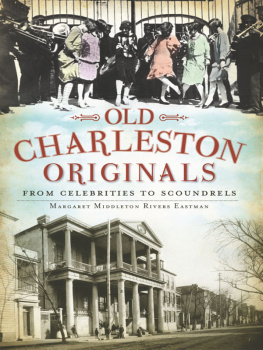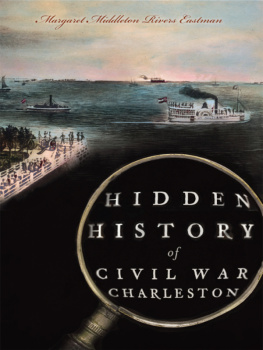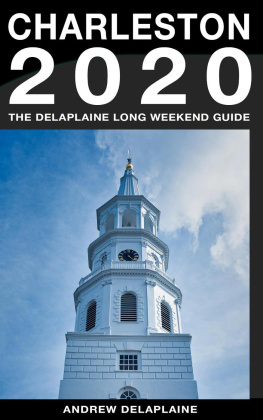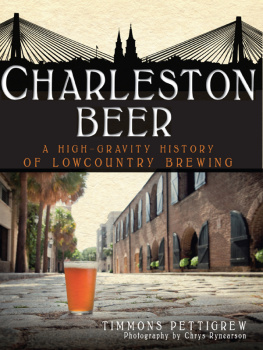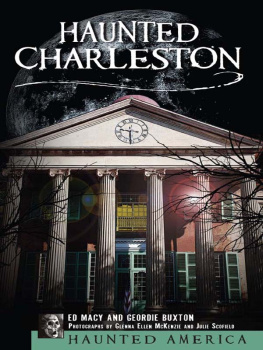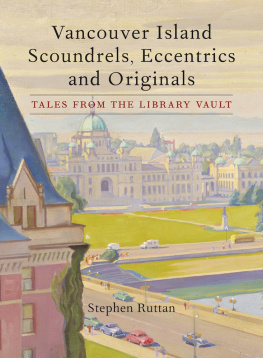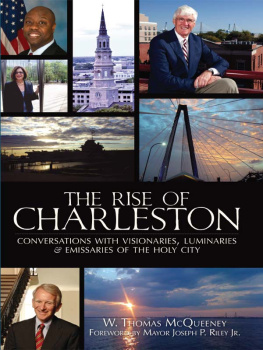
Published by The History Press
Charleston, SC 29403
www.historypress.net
Copyright 2011 by Margaret M.R. Eastman
All rights reserved
Cover images: Front images (Jenkins Orphanage and the South Carolina Hall on Meeting Street) are courtesy of the Charleston Museum, Charleston, South Carolina.
First published 2011
e-book edition 2013
Manufactured in the United States
ISBN 978.1.62584.205.3
Library of Congress Cataloging-in-Publication Data
Eastman, Margaret Middleton Rivers.
Old Charleston originals : from celebrities to scoundrels / Margaret Middleton Rivers Eastman.
p. cm.
Includes bibliographical references.
print edition ISBN 978-1-60949-252-6
1. Charleston (S.C.)--Biography. 2. Charleston (S.C.)--History. I. Title.
F279.C453A243 2011
975.7915--dc23
2011018254
Notice: The information in this book is true and complete to the best of our knowledge. It is offered without guarantee on the part of the author or The History Press. The author and The History Press disclaim all liability in connection with the use of this book.
All rights reserved. No part of this book may be reproduced or transmitted in any form whatsoever without prior written permission from the publisher except in the case of brief quotations embodied in critical articles and reviews.
In loving memory of my parents
Marwee and Mendel Rivers
CONTENTS

Drawing by Milton Caniff.
Introduction
L. MENDEL RIVERS
Rivers served as Charlestons Democratic Congressman for the First District between 1940 and 1970. Born in the tiny rural hamlet of Gumville, in Berkeley County, Riversthe son of a [prominent] rural farmerbecame one of the nations leading political figures in the global power-struggle with the Soviet Union.
Gradually ascending to the powerful chairmanship of the House Armed Services Committee, the monumentally self-confident Rivers exercised his clout on Capitol Hill by luring thousands of military jobs to the Lowcountry in the decades following World War II. In the 1950s, he successfully lobbied for the establishment of the Charleston Air Force Base. Private defense contractors located plants in Charleston as well, redefining the region as an outpost of the military-industrial complex.
A 1969 survey by the Charleston Chamber of Commerce found that payrolls for military bases pumped $317 million into the local economy, accounting for 55 percent of the regions total payroll at that time. This excessive dependence on military employment led to a long-standing joke that Charleston actually boasted three rivers, the Ashley, the Cooper and Mendel Rivers. Today his surname is emblazoned on both Rivers Avenue and the Rivers Annex Post Office.
A bold and often controversial figure, Rivers regularly lambasted 60s Secretary of Defense Robert McNamara over the nations policies during the unpopular Vietnam War. Notorious wag and nationally syndicated newspaper columnist Drew Pearson frequently attacked Rivers for what was called his pork-barrel political style.
In October 1970, the Reverend Billy Graham dedicated the L. Mendel Rivers Library at the Baptist College, now Charleston Southern University. Nearly two months later, Rivers died of heart failure. Twenty-one years after Rivers death, the Iron Curtain collapsed.
Ultimately, Rivers beloved Charleston Navy Base became a casualty of the Pentagons postCold War downsizing. Despite the militarys waning presence in Charleston, Mendel Rivers kept the Lowcountry afloat during the postWorld War II era, a transition which led todays growing, white-hot economy.
Walter Edgar, Harlan Greene, Cynthia Jenkins,
Robert Rosen and Gene Waddell
ACKNOWLEDGEMENTS
Charles Witte Waring III, editor of the Charleston Mercury, for permitting adaptation of articles that first appeared in the Mercury and for giving me the opportunity to get to know Charleston better.
Marie Ferrara, Anne Bennett, Claire Fund, Angela Flenner, Deborah Larsen, Sam Stewart and John White of the College of Charleston Special Collections Library, who have provided years of assistance and friendship.
Carl Borick, assistant director, Jennifer Scheetz, archivist, and Jan Hiester, registrar, of the Charleston Museum for invaluable support throughout the years.
Margaret (Marwee) Middleton Rivers, who left behind a treasury of writings, some of which are included in this volume.
Mendel Rivers Jr., for the story about Colonel Joseph Evans Jenkins at the Secession Convention.
Dorothy Middleton Anderson, who introduced me to A. Toomer Porter and Hampton and His Red Shirts.
Frank Barnwell, Joseph Cockrell and Fleetwood Hassell, for research on the Charleston Bible Society.
Quentin Baxter and Jack McCrae, for background information on Lowcountry music and Charleston jazz.
Amelia P. Cathcart, Ruth Knopf and Jane Waring, for introducing me to the world of heritage roses.
Charles (Charlie) Henry Drayton III and Anne Drayton Nelson, for insights about the Drayton family.
Jim and Ann Edwards, who shared their history-making life experiences.
Helen Pringle Gibbs, who patiently helped edit and provided information about the Ball family.
To Langhorne Moultrie Howard, for sharing her mothers efforts to save Marshlands and a peek at her fathers love of aviation and love for our country.
Harriott Pinckney Means Johnson, for her research about the railroad contributions of the Parsons family.
Dr. George W. McDaniel, Kristine Morris and Natalie Baker, for invaluable assistance with Drayton Halls history.
Fred MaDan, for background on 93 Rutledge Avenue.
Bert and Helen Pruitt, for providing information on 54 Meeting Street and its builder, Timothy Ford.
Jane Thornhill Schachte, Jane Lucas Thornhill and Elizabeth Jenkins Young and her family, for sharing their rich heritage.
Ted Stern, for sharing his exceptional life story.
Robert Stockton, News and Couriers Do You Know Your Charleston columnist and professor of architecture and history at the College of Charleston, for keeping me on track.
Seabrook Wilkerson, for helpful editing and support.
To the wonderful gang at The History Press who helped with this book: Jessica Berzon, Katie Parry, Dan Watson, Ryan Finn, Julie Foster, Natasha Momberger, Jamie Barreto, Adam Ferrell and Brittain Phillips.
To those who helped along the way: Wayne Braverman, Colby Broadwater, Nick Butler, Marion and Wayland Cato, Richard Donohoe, Edward Good, Christopher Liberatos, Martha Meeker, Candice Solyan, Evan Thompson, Lish Thompson, Rutledge Young Jr. and Rutledge Young III.
Margaret (Peg) Middleton Rivers Eastman
June 15, 2011
THE GOOSE CREEK MEN
COLONIAL BARBADOS
Between 1640 and 1670, the tiny island of Barbados produced a culture that, with only slight alteration, would be replicated throughout the English Caribbean islands and along the South Carolina coast.
English sailors had first landed on Barbados in 1625. Finding it uninhabited, they took possession in the name of James I; settlers arrived soon afterward. At that time, events in the Caribbean did not affect the political affairs of European nations. As a result, the island became a lawless frontier on the edge of civilization where might was right and social restraints gave way to the pursuit of wealth and its pleasures. Barbados was plagued by greed on land and by pirates at sea.
Next page
